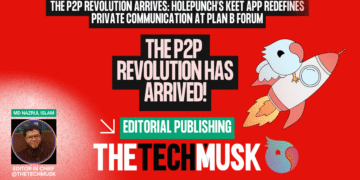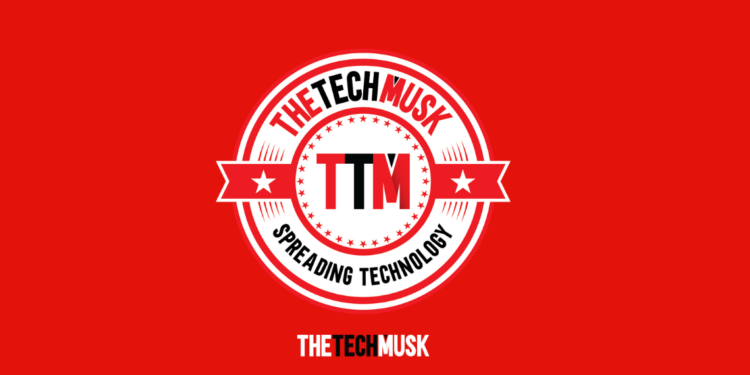To shed light on the evolving landscape of educational technology, we’ve gathered insights from nine professionals, including a Curriculum Development Manager and a Project Lead. From embracing AR, VR, and XR in education to microlearning and mobile learning as adaptable education, these experts share the top technology trends educators should be aware of.
- Embracing AR, VR, and XR in Education
- Enhancing Learning and Fostering Curiosity with AI
- Using CapCut as a Trending Educational Tool
- Personalizing Learning for the Future of Education
- Microlearning and Mobile Learning as Adaptable Education
Embracing AR, VR, and XR in Education
As the Curriculum Development Manager for an electrical apprenticeship program, my team and I are always looking for effective ways for our students to gain essential technical skills. Recent developments in immersive learning, specifically AR (augmented reality) and VR (virtual reality), are allowing us to simulate exciting, real-world job site environments in our classrooms and hands-on labs here at the Western Electrical Contractors Association (WECA).
Additionally, XR (extended reality) technologies are allowing us to roll out ever more rapid curricular iterations as we stay on top of ever-changing industry trends and demands, such as emerging technologies for green and alternative energy sources.
XR is increasingly integral to our competency-based learning and assessment program for our apprentices, and at WECA, we’re proud to be on the cutting edge in delivering advanced learning technologies for the skilled trades.
Maris Kaplan, Curriculum Development Manager, Western Electrical Contractors Association (WECA)
Augmented reality has exciting potential for education. A few weeks ago, an art exhibit created with augmented reality was attended.
AR can transform traditional, static learning materials into interactive 3D models. For example, one exhibit featured Pompeii before the volcano erupted. It was fun and interactive but also educational. This experience could increase student engagement in history, science, and literature. It could also make abstract concepts more tangible.
AR can simulate real-world scenarios. This could be utilized practically for teaching teenagers to drive, and students could practice surgeries or diagnostic procedures in a risk-free environment.
Numerous AR educational apps are cost-effective and can be easily integrated into the classroom. Students with disabilities or special needs may have better access to locations and places that are currently impossible.
Valerie De La Rosa, Educational Blogger and English Department Chair, The Weary Educator
Enhancing Learning and Fostering Curiosity with AI
It is essential that educators learn more about artificial intelligence and other emerging technologies. As educators, we are in the best position to help students understand what the impact of these technologies may be, not just now, but in the future.
Educators need to be aware of the benefits and potential concerns with the use of AI in the classroom, and facilitate learning opportunities and discussions about the technology and ethical considerations.
We also need to explore how it may impact future jobs for our students, and design learning experiences that will best prepare them with the skills needed to adapt to changes that may result from these technological transformations. We need to help students understand the potential of this technology, as well as how to best leverage it.
Rachelle Dené Poth, Spanish and Steam Teacher, Consultant, ThriveinEDU LLC
In today’s educational landscape, artificial intelligence (AI) emerges as a vital tool, one that can vastly impact the learning experience—for both the learner and the educator.
Engaging in open conversations about AI is crucial, as transparency can help to foster student curiosity rather than stifle it. Instead of prematurely jumping to write rigid policies around AI use, educators should rather be encouraged to focus on how to equip students.
Considering their immersion in technology outside the classroom, students would be enlightened by opportunities for developing deeper ethical understandings around how to responsibly and safely navigate the world of AI.
Educators should consider AI’s transformative potential for enriching teaching methods and preparing students for a future where these technologies are integral. Embracing AI at developmentally appropriate and COPPA-compliant levels can lead to more innovative learning experiences, where integrity remains a priority.
Kari Luecke, Educational Technologist, University School of Nashville
One crucial technology trend in education for educators to be aware of is the integration of artificial intelligence (AI). AI is poised to revolutionize education by offering personalized learning experiences. It analyzes students’ strengths and weaknesses, adapting the curriculum and providing tailored resources. This personalization enhances engagement and comprehension.
AI also streamlines administrative tasks, automating processes like grading and providing immediate feedback. This efficiency allows educators to allocate more time to interactive teaching methods.
Furthermore, AI can identify students at risk of falling behind, enabling early intervention and support. Overall, AI has the potential to make teaching more efficient and improve student outcomes. Educators should stay informed about AI developments and explore its integration into their teaching practices.
Eric Jourgensen, Classroom Teacher
As an educator, the profound influence AI can have on teaching has been recognized. Beyond concerns like plagiarism, AI opens doors for differentiated instruction. This tool enables the tailoring of teaching methods, catering to the diverse needs of all learners.
By integrating AI into teaching techniques, I believe that a more inclusive and effective education for every student can be provided.
Dylan Callens, Teacher and Blogger, The Teachers’ Blog
Using CapCut as a Trending Educational Tool
Educators should know about the app called CapCut! It is used in many TikToks and YouTube videos as a way to layer audio and video. It is so easy to use and free to sign up. Students are already using it on their devices. Be mindful of third-party privacy disclosures if looking to use it in the classroom or for your district.
Sara Weir, Music Teacher, Cranston Public Schools
Personalizing Learning for The Future of Education
The technology trend in education that is steamrolling down the line is “personalized learning.” This will be the future of education. In fact, we are already seeing some use of personalization in some apps used by students in certain subjects, like mathematics.
It is an approach that tailors education to individual students’ needs and preferences, using data and analytics to customize curriculum and materials. It has plenty of advantages, as it boosts engagement, offers flexibility, provides data-driven insights, and promotes lifelong learning.
The question that strikes me is, “How will this work in reality in the classroom? Will it be doable in reality?” It requires careful implementation, addressing concerns like data privacy and equity, and ensuring we train educators with adequate time to really understand how to leverage this trend effectively.
Katharine Gallagher, Professional Growth Specialist- Education, Career, Recruitment, Productivity, Business, www.katharinegallagher.com
Microlearning and Mobile Learning as Adaptable Education
Microlearning and mobile learning are new educational technology trends that will make significant impacts in the future, and educators need to be familiar with these concepts. We’ve long discussed this, and now it’s upon us.
Both concepts consider the busy lives of learners today that may make it hard to have long study sessions or classroom time. In simple terms, they allow students to gain useful skills step by step in short, easy-to-manage lessons rather than having to sit through long classes or talks all at once.
Microlearning provides quick and targeted learning, typically lasting a few seconds to minutes, available whenever and wherever needed. Mobile learning involves using gadgets like smartphones or laptops to engage with educational content, whether connected to the internet or not.
Together, microlearning and mobile learning offer adaptable and handy learning experiences, meeting varied learning needs and styles, and enhancing memory and knowledge application.
Chris Burgess, Project Lead, EuHu by Findel




























